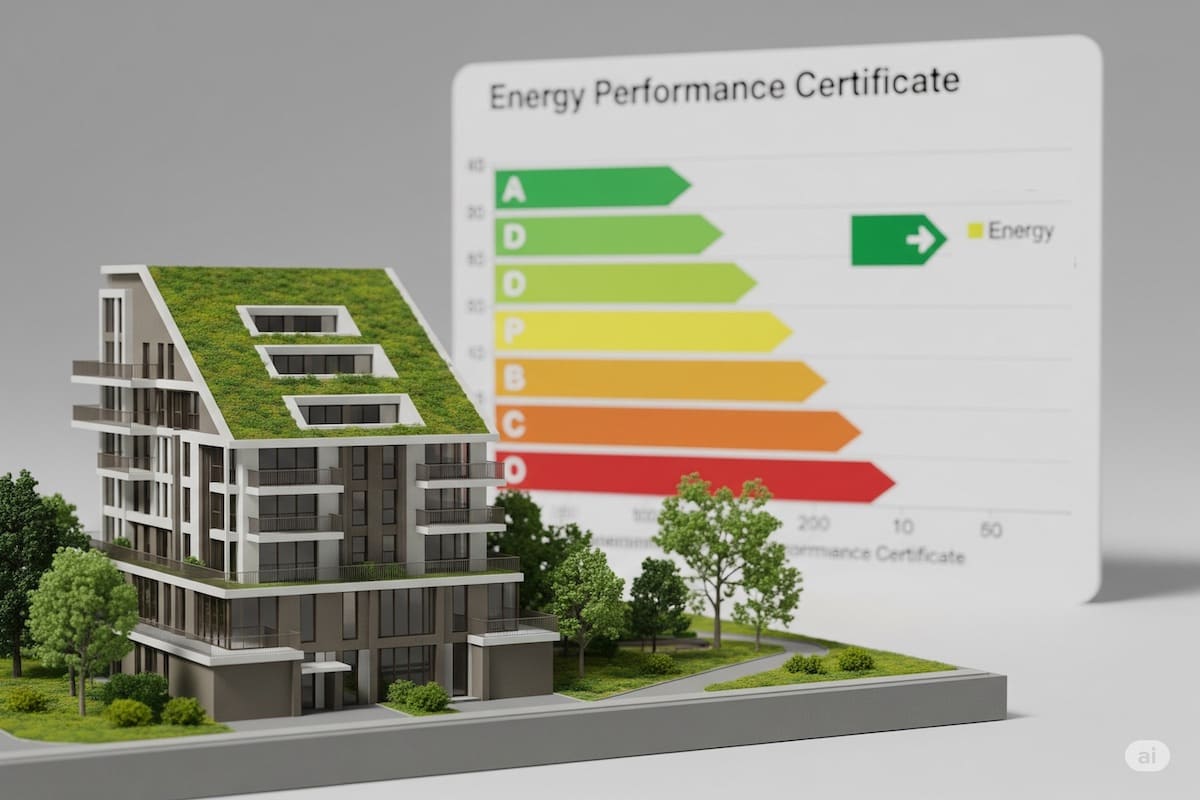
Europe lags far behind COP28 targets for energy efficiency in buildings
Despite the promises made at COP28 in Dubai, Europe remains far off track when it comes to improving energy efficiency in buildings. The global pledge signed by nearly 200 countries aimed to double the annual rate of improvement from 2% to 4% by 2030. But as of today, there is still no shared methodology for tracking real progress.
The European think tank Buildings Performance Institute Europe (BPIE) raised the alarm in its latest report, Making the Global Pledge Count, stating that current tracking methods are incomplete, inaccurate, and often misleading.
A 0.4% annual improvement in Europe: just one-tenth of what’s needed
Between 2015 and 2022, energy efficiency in heating and cooling buildings in Europe increased by only 0.4% per year. This is just a fraction of the 4% global target. According to BPIE, achieving that goal would require multiplying current efforts by a factor of 10.
The root issue: inadequate and misleading indicators
The most common metric today for energy efficiency in buildings is energy intensity (kWh/m²), or energy use per square meter. While intuitive, this indicator can be deceptive because it is influenced by external factors unrelated to real efficiency:
- Climate: a mild winter may make a building appear more efficient than it is.
- User behavior: during energy crises, families lower heating to cut costs, not because their homes are more efficient.
- Space occupancy: increasing space per person can offset any gains from reduced energy use per square meter.
Without significant changes, these metrics risk masking the truth. Lower energy consumption doesn’t automatically mean greater efficiency.
The BPIE proposal: a new multi-indicator framework
To overcome these shortcomings, BPIE proposes a three-part framework to provide a more accurate picture of energy efficiency in buildings:
- Climate-corrected kWh/m²: adjust consumption data based on heating and cooling degree days (HDD/CDD) to isolate technical improvements. This ensures that efficiency gains reflect actual progress in the building stock, regardless of climate fluctuations.
- Comfort indicator: incorporate social survey data to account for the impact of energy prices. For instance, measuring the inability to keep homes warm would help distinguish true energy savings from forced reductions due to cost. It’s essential to differentiate between efficiency gains and loss of comfort.
- Per capita consumption: complement the square meter metric with per-person data to measure efficiency in relation to actual space use. This helps track improvements tied to more efficient space usage, such as smaller or shared homes, and provides insight into whether efficiency is improving socially, not just structurally.
Testing the model in Europe reveals severe gaps
To test this new framework, BPIE applied it to European building stock using data from Eurostat, Odyssee-Mure, the EU Building Stock Observatory, and EU-SILC.
The results were discouraging. When applying additional indicators like climate correction, comfort, and per capita usage, the report highlighted serious gaps:
- Energy renovations are progressing too slowly and lack proper monitoring. The annual improvement of 0.4% remains well below the 4% target. A tenfold acceleration is required.
- Switching from per-square-meter to per-person metrics reveals a negative trend. People are using more living space, canceling out any apparent energy savings.
- During the 2021–2024 energy crisis, many households reduced heating for financial reasons. These “savings” were not driven by efficiency improvements and must not be mistaken for progress.
Even with good statistical tools, Europe is far from meeting its 4% target. Current data is insufficient to capture meaningful trends on its own.
Global tracking gaps are just as alarming
BPIE also points to the global picture, which is no better. According to the International Energy Agency (IEA), energy efficiency in buildings improved by only 1.2% annually between 2010 and 2022, falling well short of the COP28 goals. Complicating matters, global indicators often include appliance energy use, making it harder to assess building envelope and HVAC system performance specifically.
Concrete steps to make the global pledge count
To turn commitments into real progress, BPIE identifies several urgent actions:
- Adopt a multi-indicator system including climate, comfort, and per capita metrics
- Improve data quality and accuracy, clearly separating thermal and electrical uses
- Standardize energy performance certificates (EPCs) and align them internationally
- Monitor new constructions and renovations to ensure reported efficiency matches actual outcomes
Download the full report: Making the Global Pledge to Double Energy Efficiency Count